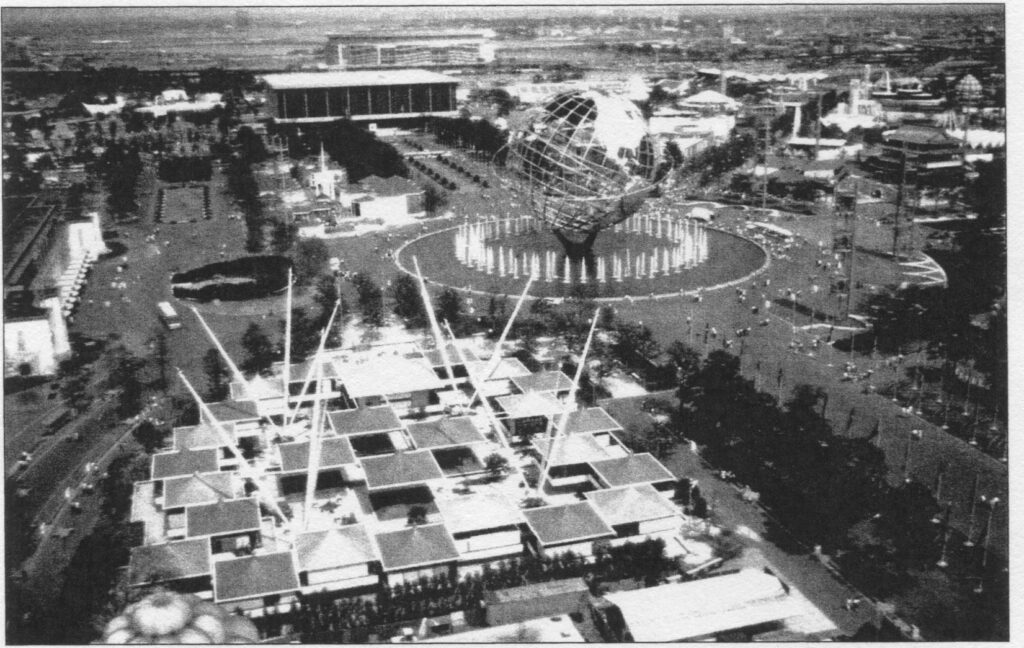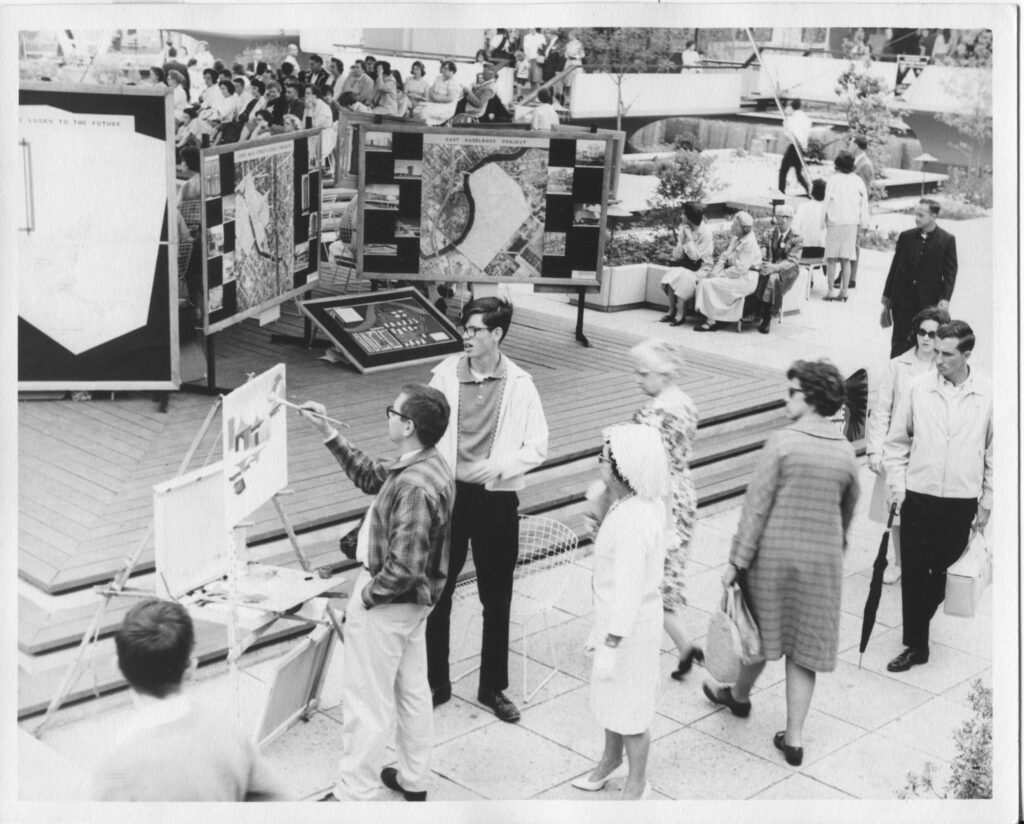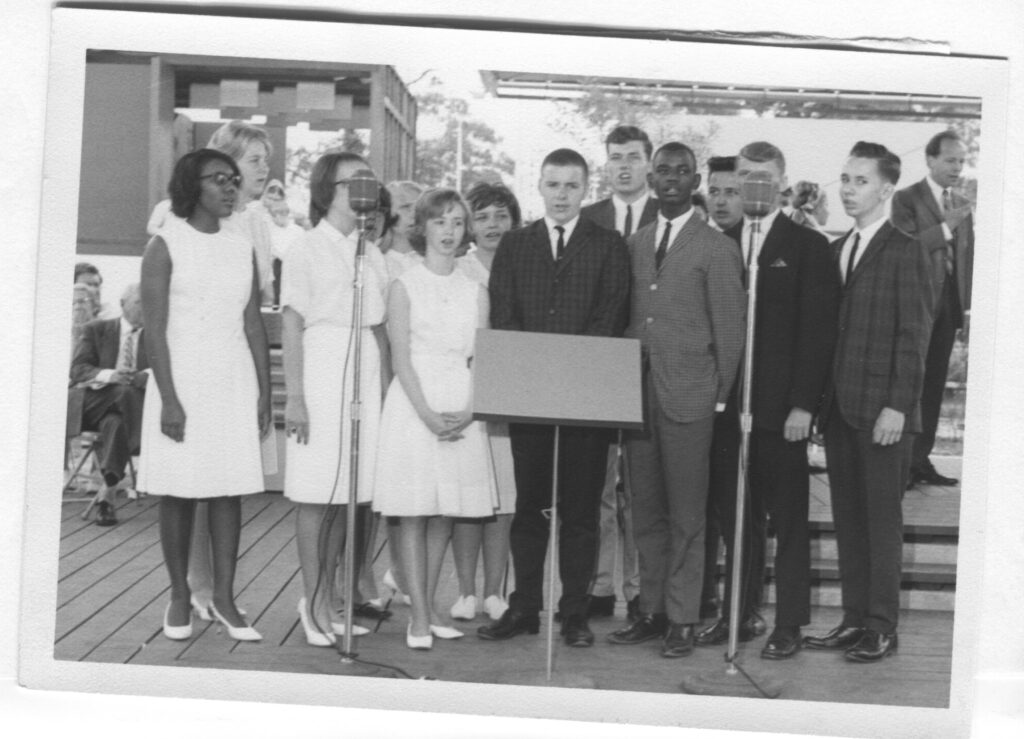
“Rahway Day” at the New York World’s Fair
Submitted by Al Shipley, City Historian and Rahway Library Research Consultant
Newspaper articles dating as far back as the 1880s show that throughout the history of the city, Rahway citizens have always been enthusiastic in promoting and supporting any observance or celebration on the calendar. Whether it was observing Washington’s or Lincoln’s birthday, or Memorial Day, the Fourth of July, or Veterans’ Day, or the city’s Centennial, or the nation’s Bicentennial, the city responded with civic fervor. It made no difference if it was an annual or a one-time observance, committees were formed to make plans for participation. The year 1964 marked the 300th anniversary of the founding of New Jersey and in the same year New York City would commemorate its own 300th anniversary by hosting a two-year world’s fair. Rahway would not miss out on the celebration.
In preparation for the special year, Rahway officials formed a Tercentenary Committee whose purpose was to creatively publicize the city and its institutions in a positive manner with the goal of building civic pride. They kicked-off the celebration on February 1st with a Tercentenary Banquet and Ball held at the Cross Keys Hotel. The committee’s most important, responsibility would be the planning and executing of “Rahway Day” at the New York World’s Fair.
It’s hard to imagine the excitement and grandeur of the 1964-1965 New York World’s Fair, especially for those who were born after the Fair or for those too young to remember the event. Touted as the first billion dollar fair in history, it was the biggest exposition the world had ever known or has seen since. Stretched over an area of 646 acres at the Flushing Meadows-Corona Park in Queens, New York City, the Fair ran for two six-month seasons, April to October. According to the Official Guidebook of the Fair, “The visitor will find almost everything at the Fair. It is a circus and a classroom, a voyage around the world, a look back at the past, a glimpse into the future.” Five distinct sections (Industrial, International, Federal and State, Transportation, and Lake Amusement) highlighted the progress that had been made in the world in the fields of art, science, education, invention, and industry. Over 140 pavilions, hosted by forty-five corporations, twenty-four U.S. states, and eighty nations from around the world, showcased diverse cultures and technologies. More than fifty million people passed through the gates to experience the sights, sounds, excitement, and fun offered at this spectacular venue.
“Rahway Day” was held on Saturday, June 13. At 9:00 that morning, a special train left Rahway Station with 731 passengers on board headed for the fairgrounds. Another 200 citizens would make the trip on chartered buses. After the groups arrived and purchased their tickets ($2.00 for adults and $1.00 for children 13 and under), they found their way to the New Jersey Pavilion where local talent and exhibits would be on display for the entire day.
The “Rahway Day” program opened with a greeting from Tercentenary Committee Chairman, Nicholas Sottolano and a welcome from Mayor Robert E. Henderson. Union County Freeholder Walter E. Ulrich and several councilmen made additional remarks. After the speakers, the Rahway High School Band took the stage and played a medley of marches and dance music. The Chantelles, a Rahway High vocal group, entertained the audience with seven songs. The Madrigal Singers, another ensemble from the high school, sang two numbers and then selected members from both groups joined to perform the telephone scene from the Broadway musical “Bye, Bye Birdie.” Over 100 students participated in the various performances.
Along with the musical presentations, the Rahway Art Center gave demonstrations in oil painting and watercolors. The Art Center’s Children’s classes had created posters prior to the Fair for entry in a contest. Thirty entries were selected as winners and were placed on display in the pavilion. Essays, posters, and exhibits had also been submitted by students in the Rahway School System and were likewise displayed. The Rahway Redevelopment Agency erected an exhibit to illustrate the progress of the Lower Main Street Urban Renewal and East Hazelwood projects, one of the largest such projects in the state. The Agency also showed films featuring Rahway’s industries.
An encore presentation of musical offerings would be given later in the day which left plenty of time for guests and performers to enjoy the many pavilions and amusements throughout the fairgrounds.
An editorial that appeared in the Rahway-News Record following the Fair gave credit to the fine work done by the committee in orchestrating the successful event. It concluded, “The program served to bring many citizens of the city together and promoted pride in Rahway. We have not heard of a person who did not have a good time at the Fair.”



